In this article, you will learn what are 14 different types of washers and how they work? and their uses with pictures. You can also download a PDF file at the end of this post.
Washers and Types
Its shape is like a round ring. Before tightening the nut and bolt, it is fitted on a stud or bolt. It is used to secure the tightness of a joint, screw, etc. and it becomes easy to open the nut-bolts and their threads are protected.
Even if the fit is a bit larger than the diameter of the bolt, with the washers help nut bolt can be tightened easily.
Also, check out the different types of nuts and bolts used in industries. You may like to know about types of threads in the designing of nuts and bolts. Furthermore, check out different types of screwdrivers for tightening and loosening and screws.
Read Also: What are the main fasteners used in the workshop?
Types of Washers
Following are the types of washers, as per their utility and functions:
- Spring washer
- Belleville or conical washer
- Dome spring washer
- Wave spring washer
- Finger spring washer
- Crescent spring washer
- Lock washer
- Split lock washer
- External tooth lock washer
- Internal tooth lock washer
- Plain washer
- Torque washer
- Flat washer
- Fender washer
- Finishing or Countersunk washer
- Shoulder washer
- C-washer
1. Spring Washer
This washer is in the shape of a ring cut by spring steel. Its ends are slightly raised up and down due to spring tension. These washers are placed above or below the nut or bolt and tighten so much that both their ends face each other and become leveled.
These washers are used to prevent a nut from loosening. These are used where there is vibration, or jolts occur. This puts pressure against the nut, preventing the latter (the nut) from turning and working loose.
There are several forms of spring washers. Each has its own advantages. Single pattern spring washer, standard pattern spring washer, double pattern spring washer, grip pattern spring washer, and girder pattern spring washer are the structures of spring washer.
#1 Belleville or Conical Washer
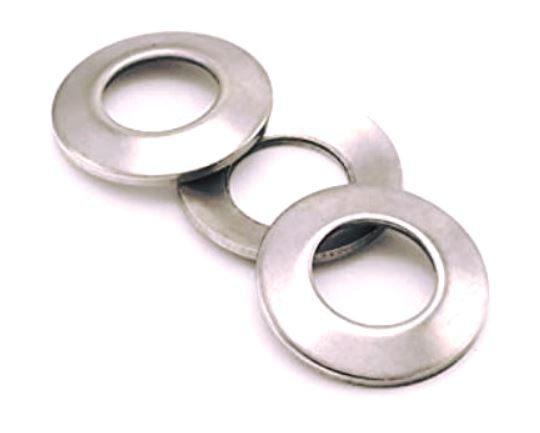
The Belleville washer consists of sides that support very heavy force with small deflections. It is also known as a conical spring washer.
These washers hold an arrangement under tension during thermal expansion and contraction requirements. Conical washer load-deflection properties depend on its height and thickness rate. It is used for projects including thermal expansion.
#2 Dome Spring Washer
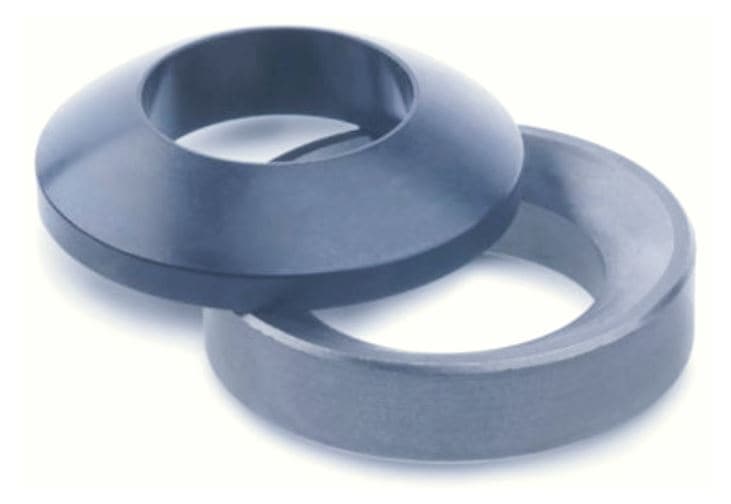
The dome spring washers are similar to a Belleville washer but with rounded sides. Dome spring washers produce very high load capabilities with a comparatively small deflection range.
They possess ground curves to form a flatter load-bearing surface. It is used wherever you would use a crescent spring washer, but there is also a need to create a flatter surface.
#3 Wave Spring Washer
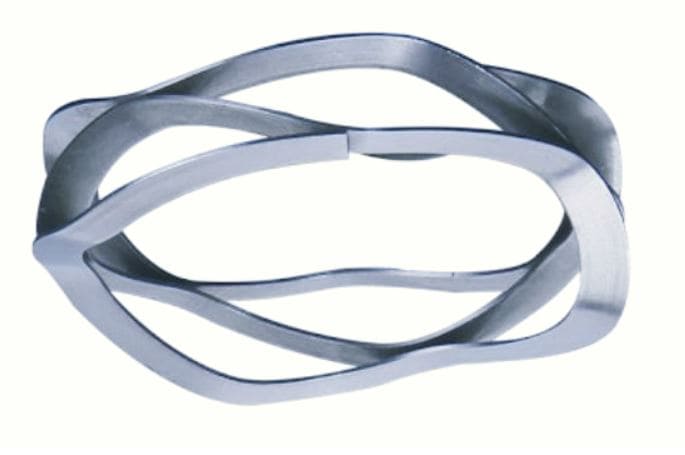
These types of washers rotate in two directions, forming a wave-like shape. Wave spring washers possess enough load capacity and deflection.
They serve as cushion springs or spacers on a shaft. Wave springs washers have average load capacity and deflection limits. It is most frequently used as a cushion or spacer.
#4 Finger Spring Washer
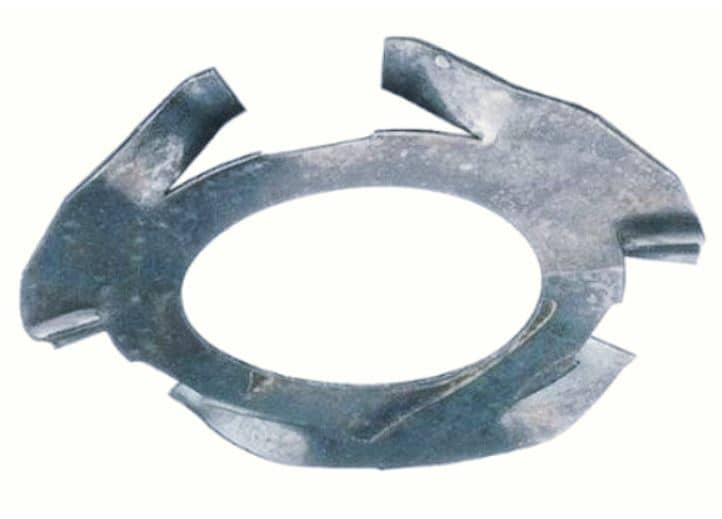
The finger spring washers consist of three curved flanges. Finger spring washers are used to reduce the damping and noise, extra wear, vibration, and skidding wear on revolving parts.
Finger spring washers are made of carbon steel. They combine the flexibility of a casing washer with the given load points of a wave washer.
#5 Crescent Spring Washer
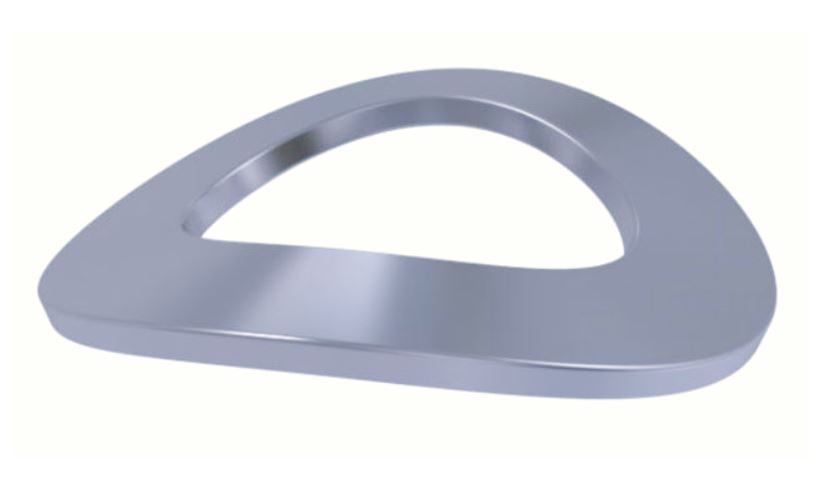
These washers look like flat washers that have been somewhat curved to give lighter pressure and maintain flexibility. It is also known as curved spring washers. They support almost small loads with a wide deflection range.
These types of washers provide uniform spring rates over the deflection range and have linear load-deflection properties. Curved spring washers must be used in flexible and load-cycling products. It is also employed to absorb movement.
2. Lock Washer
This form of lock washer is used to lock the nuts and bolts. These are many forms. Generally, six or more leaves are extended beyond the main diameter of the lock washer.
After fixing this washer its leaves are bent on the sides of the nut or bolt. Thus, this washer prevents the nut bolts from getting loose. This washer is generally used in cars, trucks, etc.
#1 Split Lock Washer
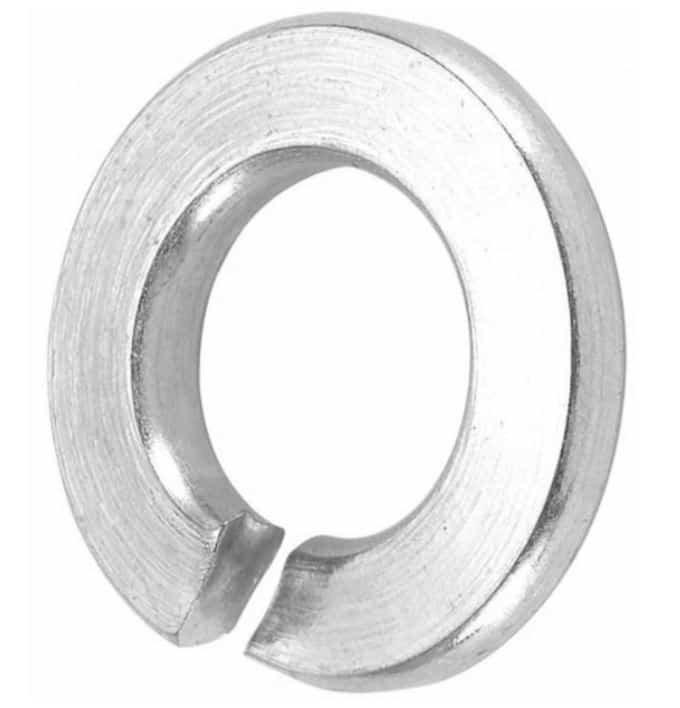
Split lock washers are non-continuous rings that tilt each end slightly outside in opposite directions. When the splitting lock washers are secured, each end is dug into the mating surfaces. It is also sometimes known as helical washers.
This washer develops preload on the screw while tightening. The developed preload gives protection from loosening during vibration and corrosion. It is used to lock a bolt into place.
#2 External Tooth Washer
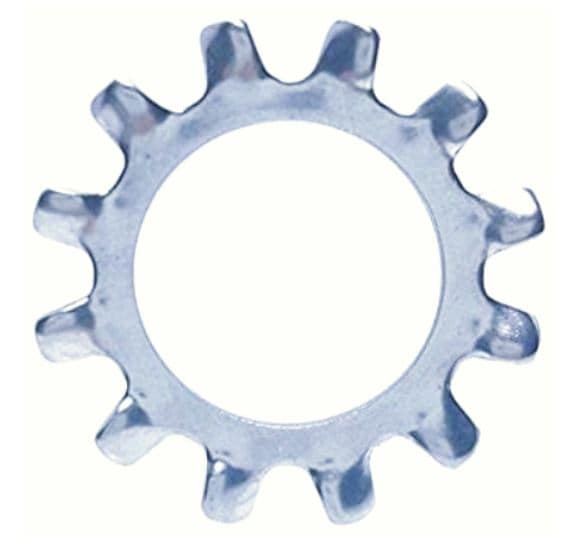
This type of lock washer has many teeth on its outer diameter that cut into a surface and maintain compression. The external tooth lock washer prevents a fastener head from loosening by using the strut action of the teeth.
They operate most suitable under large head screws. The external tooth lock washer provides maximum torsional resistance. It is used to lock deep-headed fasteners into place.
#3 Internal Tooth Washer
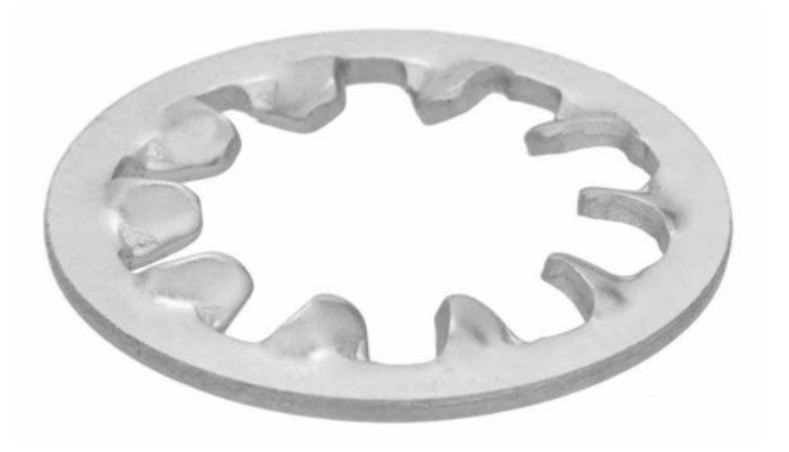
This type of lock washer consists of many teeth on the inside diameter that cut into the nut or bolt. The internal tooth lock washer prevents a fastener head from loosening using the strut action of the teeth.
These washer teeth can also absorb shock and vibration. It is used to lock shallow-headed fasteners into place.
3. Plain Washer
A plain washer is a flat disc. It has a hole in its center through which a bolt, stud, or set-screw can pass. By using it, the surface below the bolts or nuts becomes plain. In this way, the pressure of the nut is uniform on the entire surface. This washer is of the following standard:
Diameter of the washer = 2D + 1/8 (D = Diameter of bolts)
The thickness of Washer = 1/8 D
The angle of Chamfer = 30°
Diameter of inner hole = Diameter of bolt
#1 Torque Washer
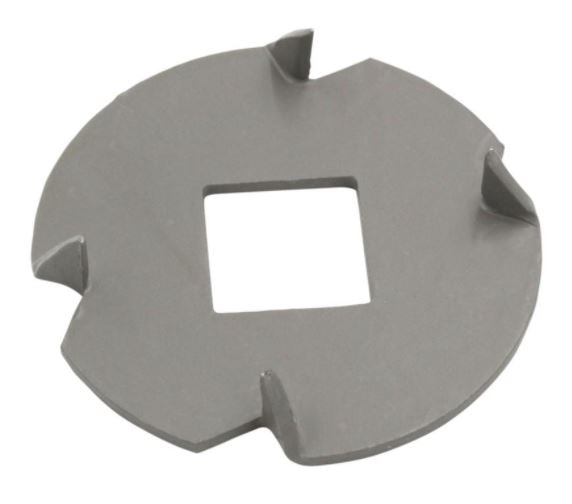
The Torque washer consists of a square hole and outer forks that prevent the bolt from spinning with it when fastening a bolt. It is mainly used with a carriage bolt for woodworking projects.
#2 Flat Washer
The flat plain washers are thin, flat, and circular in shape with a hole in the center. Flat plain washer application is intended to give the load over a relatively large area and give support to small head screws.
It is also known as Type A plain washers. A flat washer is what most people think of a normal washer. They are good for general use.
#3 Fender Washer
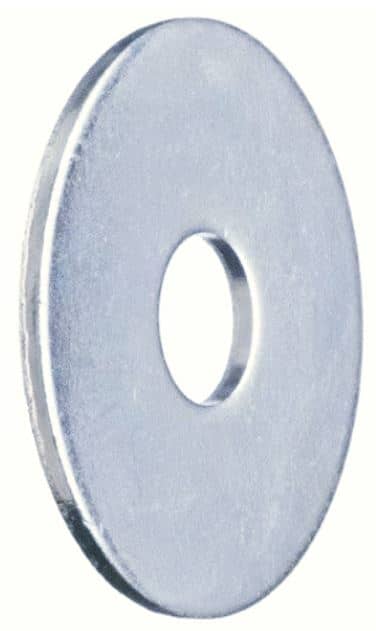
The fender washers are flat washers with a small hole and outside relatively large diameter. Hence this type of plain washer gives loads over a relatively larger area than flat washers.
Fender washers have applications for installing signboards, panels, drywall, automobiles, plumbing, sheet metal, and electrical applications. It is usually a thin metal. They have named it for their general use on car fenders.
#4 Finishing or Countersunk Washer
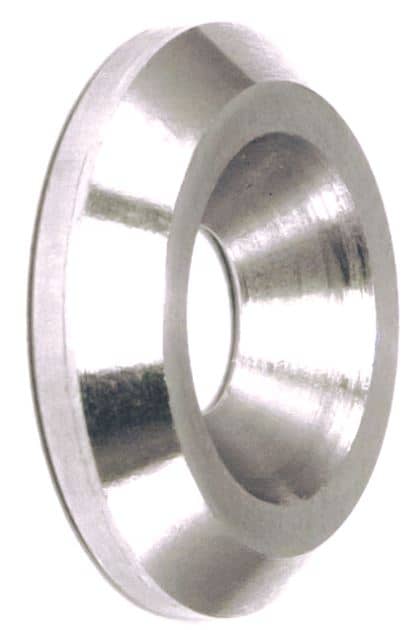
The finishing washer has a top designed to hold the fastener. It is also known as a countersunk washer. The Countersunk washer has 90° or 120° counters at the top.
These washers served as flat washers for flat head counters screws. This gives a flush surface to the countersunk screw.
#5 Shoulder Washer
Shoulder washers consist of a shoulder type of structure. They are employed to protect screws, wires, or any element from the rest of the assembly. They are available in fiber-glass, phenolic, nylon, PCTFE, PTFE, and metals.
#6 C-Washer
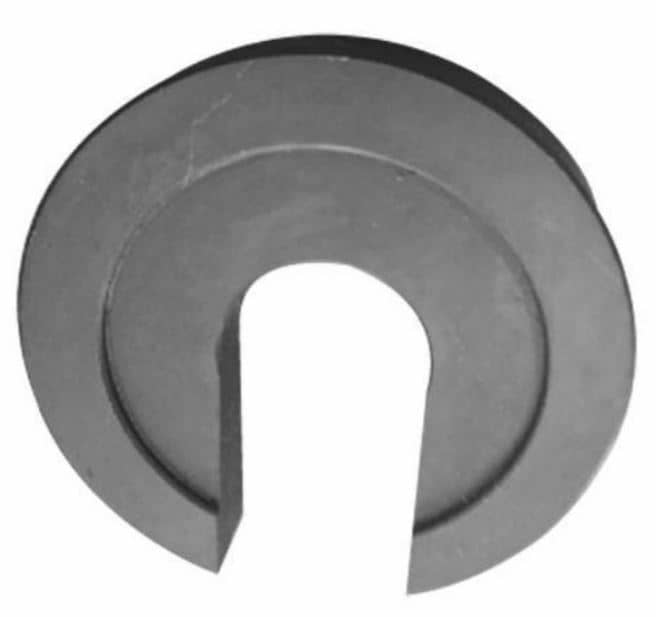
These look like a flat washer, however, it has a slot cut from the center hole to form a “C” shape. A C-washer is made to slide in and out of place on the bolt or shaft.
The C-Washer used at any time may need to be adjusted or replaced, without removing the fastener.
Download PDF of this article
Conclusion
The washer is a disc-shaped flat plate with a center hole. They are used to give loads over a large area. It is mainly used for spacers, pre-loading screws, springs, and vibration reduction.
If you have still any doubts about the “Types of Washers” you can contact us or ask in the comments. If you like our article then please share it with your friends. Have any questions about any topic just feel free to ask in the comment section.
Lastly, subscribe to our newsletter to get notified when we upload new posts.
You might like to explore more articles on our blog:
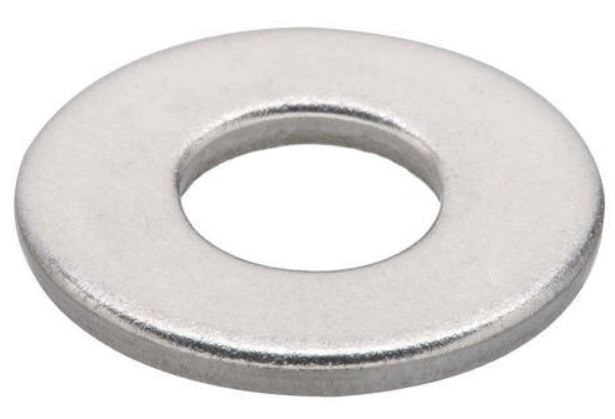
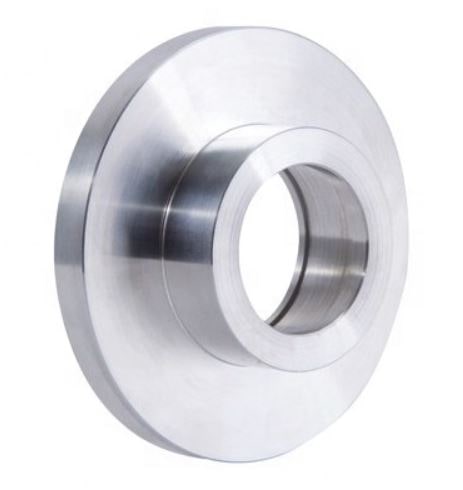
is there a “washer” made of spring steel, that slides onto a rod and is held on by friction of “teeth” on the inside of the washer itself. I have seen something like this on toys and devices that are not made to be disassembled, but don’t know what to call them. where do I find them??
Yes, they are called spring steel friction washers. You can find them in hardware stores or online.
Hi There,
Thanks for sharing this creative and valuable content with us. It seems to be very helpful and knowledgeable.
Keep Updating…
You’re welcome. Keep visiting.
I am looking to find the type of lock washer that will keep the nut on my automobile starter 3/8″ bolt from coming loose. I prefer the fit of the external start type as it is not as thick as the traditional lock washer. Is this a better alternative or would the internal star be better? This is a forged iron nut and it screws on to a brass coated metal post.
Thanks for your work.
joe
For your automobile starter 3/8″ bolt, an external star lock washer may be a better fit as it is not as thick as a traditional lock washer. However, it is recommended to confirm the suitability with a specialist.
Good information for every one relating this field
Thanks for your feedback.
i got black i got what you want? so many different kind of washers, so beautefull and amazing, i’m really impressed by the variety of washers that you have showed
Thanks for your feedback.
Well done! Very helpful, thank you
You’re welcome.
Thanks for the article. It’s very helpful to those of us who are amateurs, especially when we go to the hardware store.
I’m glad you liked it. You’re welcome.
Thank you for the effort to provide this information.
You’re welcome